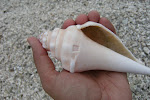 I have to talk to the guys who do lawn at the office. A Silver Pipturus (Pipturus argenteus) shot up fairly quickly in the middle of the ginger plant. It was almost 4 feet tall when the guys came, saw it as a weed, and macheted the hell out of it. I am sure it’ll grow again but let the fellas know before the chop it down again.
I have to talk to the guys who do lawn at the office. A Silver Pipturus (Pipturus argenteus) shot up fairly quickly in the middle of the ginger plant. It was almost 4 feet tall when the guys came, saw it as a weed, and macheted the hell out of it. I am sure it’ll grow again but let the fellas know before the chop it down again. 
It’s true the Silver Pipturus or Amahayan in Chamorro (Ghasooso in Carolinian) don’t seem like it could be used as a decorative tree for your landscaping projects. I’ve developed a special appreciation for it though ever since learning that it was a traditionally useful plant.

Amahayan is a common shrub like tree. It can grow up to 5m (16ft) along the beach in limestone forests and disturbed areas. Their branches are reddish brown and the leaves are a fuzzy, light green above and silvery in the bottom (hence their name).

I found a Hypolimnas anomala butterfly in this tree up at Navy Hill. I remember reading that this butterfly is unique in that she sticks around after laying its eggs and guards them until the caterpillars hatch. The motherly butterfly stays with her offspring until she dies!
 Yikes! Cool! A few moments later, I found out where she had laid her eggs and the caterpillars hatched.
Yikes! Cool! A few moments later, I found out where she had laid her eggs and the caterpillars hatched.
The bark can provide a brown dye and the sap was once used to bring the heads of boils out for drainage. The bark fibers of the Amahayan was once used by the ancients for cordage and fishing nets that were said to be of better quality than coconut fiber. I pulled some strips of bark off the discarded branches to see if I could twist them into cordage. Making natural cord well takes some practice. The bark was hard to manipulate because it was very slimy. I am going to guess that you must need to boil the bark and then dry before it can be woven into a proper cord.

 You can make a simple cord using the finger-twisting method by marking the middle of the bark strip (A). Twist one end away from you (B) while twisting the other towards you (c) until a loop forms in the middle (A) that you marked. The cord forms as both ends tend to naturally twists together (D) but to make a tight cord, you will have to guide it manually.
You can make a simple cord using the finger-twisting method by marking the middle of the bark strip (A). Twist one end away from you (B) while twisting the other towards you (c) until a loop forms in the middle (A) that you marked. The cord forms as both ends tend to naturally twists together (D) but to make a tight cord, you will have to guide it manually.  You just twist more strips of bark to make a longer cord. It may be difficult to make at first and your fingers do get tired, but practice makes perfect. It is a useful skill to have if you need to live in the boonies for some time.
You just twist more strips of bark to make a longer cord. It may be difficult to make at first and your fingers do get tired, but practice makes perfect. It is a useful skill to have if you need to live in the boonies for some time.
I’d like to make enough cord one day and make a hook out of a tree oyster shell to replicate an ancient Chamorro fishing hook and line. Or maybe make an entire fishing net. Man, I wish I had more time.
Ti napu.
The Beachcomber



3 comments:
There's no way I'd have the coordination to make that cord. Good job, BC!
It takes practice and more practice, my friend! I am no expert mind you. I've yet to do longer cordage that would entail using the thigh rolling method. This is the technique necessary for making the tough coconut fiber cords I used on my adze.
Thanks for sharing info Webmasters SEO Marketing Forum and Webmasters SEO Marketing Blog and Webmasters SEO Marketing Blog and Uber People Sucks and Permai Marketing Blog and KJRI Los Angeles and Cellulars Sales Los Angeles and Dogs Sitting Los Angeles and Security Guards Jobs Los Angeles and Guam Night and Guam Blog and Maltese Dogs Breeder
Contact: webmasterspride@gmail.com
Post a Comment